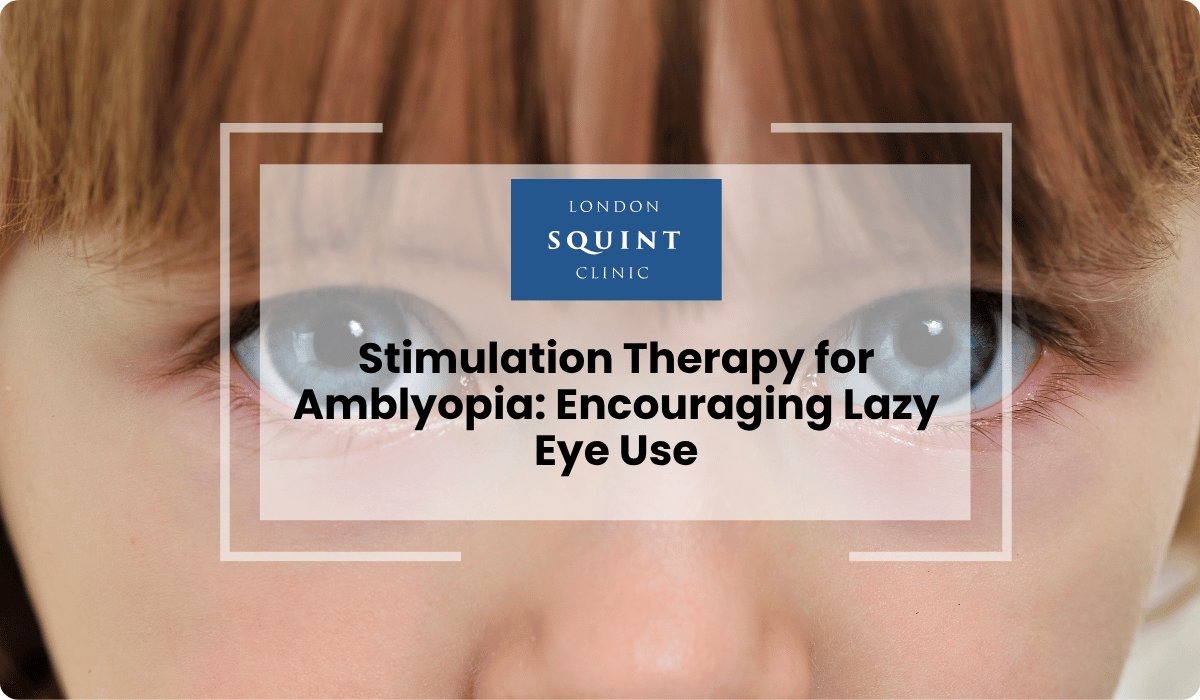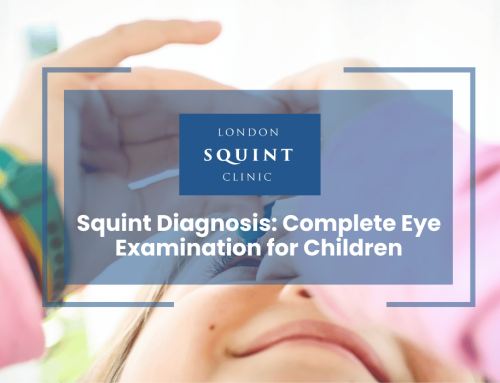Stimulation Therapy for Amblyopia: Encouraging Lazy Eye Use
Essential Insights for Successful Amblyopia Treatment
Early intervention is crucial: The first 8-10 years of life represent the critical period for visual development when the brain remains highly plastic, making treatment most effective.
Active stimulation outperforms passive patching: Combining patching with engaging visual activities that challenge the weaker eye produces better outcomes than occlusion therapy alone.
Consistency trumps intensity: Regular, predictable treatment sessions integrated into daily routines lead to better compliance and more sustainable visual improvements.
Integrated approaches yield best results: Combining traditional methods (proper glasses, patching) with modern techniques (perceptual learning, dichoptic training) addresses multiple aspects of visual function.
Progress follows a predictable pattern: Most improvement occurs within the first 3-6 months of treatment, with continued gains possible for up to a year or more with consistent therapy.
Table of Contents
- Understanding Amblyopia: What Causes a “Lazy Eye”
- What Is Stimulation Therapy for Amblyopia?
- Evidence-Based Approaches to Lazy Eye Stimulation
- How to Encourage Your Child to Use Their Weaker Eye
- Effective Activities That Strengthen Visual Development
- Combining Traditional and Modern Amblyopia Treatments
- Measuring Progress: When to Expect Improvements
Understanding Amblyopia: What Causes a “Lazy Eye”
Amblyopia, commonly known as “lazy eye,” is a neurodevelopmental vision disorder affecting approximately 3% of children worldwide. Despite its nickname suggesting an eye that doesn’t move properly, amblyopia actually refers to reduced vision in one eye due to abnormal visual development during early childhood. The condition develops when the brain favours one eye over the other, eventually suppressing visual input from the weaker eye.
Several underlying factors can trigger this visual imbalance:
- Refractive errors: Significant differences in prescription between eyes (anisometropia) can cause the brain to rely on the clearer image
- Strabismus: Misalignment of the eyes leads the brain to ignore input from the turned eye to avoid double vision
- Visual deprivation: Conditions like congenital cataracts or ptosis (droopy eyelid) that block vision during critical developmental periods
The critical period for visual development occurs primarily during the first 8-10 years of life. During this time, the visual cortex remains highly plastic, making early intervention crucial. Without proper treatment, the visual pathways serving the weaker eye fail to develop properly, resulting in permanent vision deficits that cannot be corrected with glasses or contact lenses alone.
What Is Stimulation Therapy for Amblyopia?
Stimulation therapy for amblyopia encompasses a range of techniques designed to actively engage and strengthen the visual processing of the weaker eye. Unlike passive treatments that simply block the stronger eye, stimulation therapy focuses on actively exercising the amblyopic eye through targeted visual activities and exercises.
The fundamental principle behind stimulation therapy is neuroplasticity—the brain’s remarkable ability to reorganise itself by forming new neural connections. By providing specific visual stimulation to the weaker eye, these therapies aim to strengthen neural pathways in the visual cortex that process information from the amblyopic eye.
Stimulation therapy typically involves:
- Active visual exercises: Tasks specifically designed to challenge and improve visual acuity, contrast sensitivity, and binocular coordination
- Perceptual learning: Repeated exposure to visual stimuli that gradually increase in difficulty
- Binocular training: Activities that encourage both eyes to work together, promoting fusion of images
- Visual attention tasks: Exercises that require focused attention through the weaker eye
Unlike traditional patching alone, which can be passive and sometimes frustrating for children, stimulation therapy actively engages the child in the treatment process, often incorporating game-like elements that maintain interest and motivation. This approach is particularly valuable as part of a comprehensive amblyopia treatment plan.
Evidence-Based Approaches to Lazy Eye Stimulation
Research in paediatric ophthalmology has validated several evidence-based approaches to lazy eye stimulation that demonstrate measurable improvements in visual function. These methods have evolved significantly from traditional patching to incorporate more engaging and effective techniques.
Perceptual Learning: Multiple clinical studies have shown that perceptual learning—repetitive practice of specific visual tasks—can significantly improve visual acuity in amblyopic eyes. This approach typically involves discriminating between visual patterns of increasing difficulty, with research showing improvements of 1-2 lines on vision charts after 40-50 hours of training.
Dichoptic Training: This innovative approach presents different images to each eye simultaneously, requiring both eyes to work together. A 2019 systematic review published in the British Journal of Ophthalmology found that dichoptic training produced comparable results to patching while requiring fewer treatment hours and improving binocular function.
Contrast Balancing: Research has demonstrated that reducing the image contrast presented to the stronger eye while maintaining normal contrast to the amblyopic eye can facilitate binocular vision. This technique has shown particular promise in cases where traditional patching has reached a plateau.
Video Game Therapy: Specially designed video games that incorporate contrast balancing and dichoptic training have shown promising results in clinical trials. These games maintain children’s interest while delivering therapeutic benefits, with studies comparing their efficacy to traditional patching showing comparable or superior outcomes in many cases.
The most robust evidence supports combining these stimulation approaches with traditional methods rather than using them as standalone treatments, particularly for moderate to severe amblyopia cases.
How to Encourage Your Child to Use Their Weaker Eye
Encouraging consistent use of the weaker eye is essential for successful amblyopia treatment, yet it often presents significant challenges for parents and children alike. Creating a positive, supportive environment can dramatically improve compliance and treatment outcomes.
Establish a Consistent Routine: Children thrive on predictability. Set regular times for eye patching or other treatments, perhaps after breakfast or before a favourite activity. Consistency helps normalise the treatment as part of daily life rather than an intrusion.
Use Positive Reinforcement: Create a reward system that acknowledges your child’s efforts. This might include sticker charts, small prizes, or special privileges after completing treatment sessions. Focus on praising the process rather than just the outcome.
Involve Your Child in Treatment Decisions: When appropriate, allow your child to choose between acceptable treatment options—such as selecting patch designs or deciding which vision therapy games to play. This sense of agency can significantly reduce resistance.
Address Emotional Concerns: Some children feel self-conscious about wearing patches or different glasses. Acknowledge these feelings while helping them develop coping strategies. Consider reading children’s books about amblyopia or introducing them to others with similar experiences.
Communicate with Teachers and Caregivers: Ensure that everyone involved in your child’s care understands the treatment plan and its importance. This creates a supportive environment across all settings and prevents mixed messages that might undermine compliance.
Model Resilience: Frame treatment as a challenge to overcome rather than a burden to bear. Share age-appropriate stories about persistence and celebrate small improvements to build your child’s confidence in the treatment process.
Effective Activities That Strengthen Visual Development
Engaging in specific activities during treatment periods can significantly enhance visual development in the amblyopic eye. These activities are most effective when they’re enjoyable for the child while providing appropriate visual challenges.
Fine Motor Activities: Tasks requiring precision hand-eye coordination provide excellent stimulation for the weaker eye:
- Threading beads or pasta onto string
- Building with small construction blocks
- Completing jigsaw puzzles with age-appropriate complexity
- Drawing or colouring within boundaries
Visual Search Activities: These exercises encourage active scanning and visual discrimination:
- “I Spy” games with increasingly subtle visual targets
- Hidden picture books with graduated difficulty levels
- Sorting small objects by colour, shape, or size
- Matching games that require visual memory
Reading and Near Work: When the amblyopic eye has sufficient acuity, reading provides excellent stimulation:
- Reading books with high-contrast text and interesting illustrations
- Using a reading window that highlights one line at a time
- Tracing letters or shapes with a finger while viewing
Distance Vision Activities: These help develop acuity at varying distances:
- Ball games that require tracking moving objects
- Identifying details on distant objects during walks
- Aiming games like bean bag toss or ring toss
The key to effective visual stimulation is gradually increasing the challenge as the child’s abilities improve. Activities should be adjusted based on the child’s age, interests, and current visual capabilities, always aiming for the “just right” challenge that promotes development without causing frustration.
Combining Traditional and Modern Amblyopia Treatments
The most effective approach to amblyopia management typically involves combining traditional methods with newer, evidence-based techniques. This integrated strategy addresses multiple aspects of visual function while maintaining treatment engagement.
Optical Correction as Foundation: Before implementing any stimulation therapy, proper spectacle correction is essential. Research shows that simply wearing the correct prescription glasses can improve vision in up to 30% of children with amblyopia. These glasses should be worn full-time to provide the clearest possible image to both eyes.
Strategic Patching with Active Stimulation: Rather than passive patching alone, combining occlusion therapy with stimulating activities maximises effectiveness. The prescribed patching duration should be filled with activities that specifically challenge the amblyopic eye, such as near work requiring visual discrimination or hand-eye coordination tasks.
Alternating Treatment Modalities: Some children benefit from alternating between different treatment approaches. For example, patching might be used during home activities, while atropine penalisation (blurring the stronger eye with eye drops) might be preferred for school attendance. This flexibility can improve overall compliance.
Digital Therapies as Supplements: Tablet-based vision therapy applications and specialised video games can supplement traditional treatments, particularly for older children or those who have plateaued with conventional approaches. These digital tools often incorporate binocular training that traditional patching cannot provide.
Structured Progression: A well-designed treatment plan includes clear progression criteria, moving from monocular (single eye) training to binocular integration as the amblyopic eye strengthens. This graduated approach ensures that each visual skill builds upon previously established abilities.
Regular monitoring by an ophthalmologist or orthoptist remains crucial throughout treatment to assess progress and make necessary adjustments to this combined approach. The optimal treatment combination varies based on the child’s age, amblyopia severity, and specific visual deficits.
Measuring Progress: When to Expect Improvements
Understanding the typical timeline for amblyopia improvement helps parents maintain realistic expectations and sustain motivation throughout the treatment journey. Progress varies considerably based on several factors, including the child’s age, amblyopia severity, underlying cause, and treatment compliance.
Initial Response Period (1-3 months): Most children show their most rapid improvement during the first few months of consistent treatment. Visual acuity typically improves by 1-3 lines on the vision chart during this period, with younger children often showing faster gains. This early progress provides important positive reinforcement for continuing treatment.
Steady Improvement Phase (3-6 months): Following the initial response, improvement typically continues at a slower but steady pace. During this phase, parents might notice improved depth perception, better hand-eye coordination, or more confident movement in addition to measured visual acuity improvements.
Plateau and Consolidation (6-12 months): Many children reach a plateau where progress appears to slow or temporarily stop. This doesn’t necessarily indicate treatment failure but may suggest the need for treatment adjustment. Sometimes, reducing treatment intensity while maintaining some intervention helps consolidate gains.
Monitoring for Regression: After achieving maximum improvement, monitoring remains important as regression can occur, particularly in younger children. Follow-up assessments at 3-6 month intervals are typically recommended for at least a year after active treatment concludes.
Several objective measures help track progress beyond standard visual acuity testing:
- Contrast sensitivity testing
- Stereoacuity (depth perception) measurements
- Visual field assessment
- Reading speed and accuracy
- Performance on age-appropriate visual-motor tasks
It’s important to note that while most improvement occurs within the first year of treatment, some children continue to show gains with extended therapy. The critical period for visual development extends through early childhood, with diminishing but still meaningful plasticity into adolescence and even adulthood in some cases.
Frequently Asked Questions
At what age is amblyopia treatment most effective?
Amblyopia treatment is most effective when started before age 7, during the critical period of visual development. Earlier intervention (ages 3-5) typically yields faster and more complete results. However, research shows meaningful improvements can still occur in older children and adolescents, though treatment may require longer duration and more intensive approaches. The brain maintains some visual plasticity beyond childhood, so evaluation is worthwhile regardless of age.
How long does my child need to wear an eye patch each day?
Patching duration depends on amblyopia severity. For moderate amblyopia, 2-4 hours daily is typically recommended, while severe cases may require 6 hours. Younger children often respond to shorter patching periods (2 hours) as effectively as longer ones. The key is consistency and engaging in visually stimulating activities during patching. Your ophthalmologist will adjust the schedule based on your child’s progress and compliance.
Can amblyopia return after successful treatment?
Yes, amblyopia can recur, particularly in younger children who haven’t completed visual development. Approximately 25% of successfully treated children experience some regression within the first year after treatment ends. Risk factors include earlier treatment age, more severe initial amblyopia, and discontinuing glasses wear. Regular follow-up appointments for at least 1-2 years after reaching treatment goals are essential for monitoring and addressing any regression promptly.
Are there alternatives if my child refuses to wear a patch?
Several alternatives exist for children who struggle with traditional patching:
– Atropine eye drops (blurring the stronger eye)
– Frosted or Bangerter filter lenses over the stronger eye
– Part-time patching with increased compliance
– Digital therapy using specialized tablet applications
– Binocular treatments that don’t require patching
These alternatives can be equally effective when used consistently and should be discussed with your eye care professional to determine the most appropriate option for your child.
How can I tell if vision therapy is actually working?
Progress indicators include:
– Improved visual acuity measurements during professional examinations
– Better eye alignment or reduced eye turning
– Enhanced depth perception and 3D vision
– Improved reading ability and attention to visual details
– Better hand-eye coordination during play and sports
– Reduced squinting or head tilting
– Your child’s subjective reports of clearer vision
Regular assessment by an eye care professional using standardized tests provides the most reliable measure of improvement.
Can video games really help treat lazy eye?
Yes, specially designed therapeutic video games have shown clinical effectiveness in treating amblyopia. These games use dichoptic training (presenting different images to each eye) or contrast balancing to promote binocular vision. Research published in JAMA Ophthalmology and other peer-reviewed journals demonstrates that these digital therapies can improve visual acuity and binocular function, particularly when combined with conventional treatments. However, standard commercial video games without these specific therapeutic elements don’t provide the same benefits.
Find out if you are suitable for Double Vision Treatment
Not everyone is eligible for double vision surgery.
Find out if you could benefit from this life-changing surgery by taking the quick self-suitability quiz below:
Our most popular procedures

Hello, I’m Nadeem Ali
I’m one of the few eye surgeons in the world with 100% focus on Squint and Double Vision Surgery.
I have 24 years of eye surgery experience, and worked for 13 years as a Consultant at London’s renowned Moorfields Eye Hospital.
In 2023, I left the NHS to focus fully on treating patients from across the world at the London Squint Clinic. You can read more about me here.
There’s lots of information on the website about: squint surgery, double vision surgery and our pricing.
The most rewarding part of my job is hearing patients tell me how squint or double vision surgery has changed their lives. You can hear these stories here.
Mr Nadeem Ali
MA MB BChir MRCOphth FRCSEd(Ophth)





